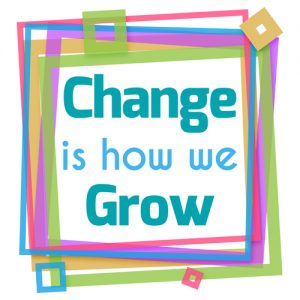Why do people resist change – even if they know it’s the best option?
No matter the size and scale of the change – from implementing a new piece of software to making sweeping changes to the whole company, improving customer service or downsizing the business – it’s crucial for leaders to ensure that change is managed well.
It’s fine to have strategic ideas at management level, but without the enthusiasm and commitment to those changes from your employees, it‘s going to be challenging for you to implement them.
Employees can completely undermine top–level intentions and disrupt a leader’s credibility in the process. A case in point being Phillips Electronics, in the Netherlands when employees’ failure to understand changing circumstances drove the organisation to the brink of bankruptcy.
Managers and employees tend to view things from very different angles. And without excellent change management, there will inevitably be a breakdown in communication and plans will miss their intended mark.
In this article, we will look at the main reasons your team is likely to resist your plans for change, and how to get them on your side.
 1. Lack Of Communication
1. Lack Of Communication
Failure to communicate is a classic symptom of poor change management.
Leaders sometimes feel that information only needs to be related on a need–to–know basis; they may think voicing the changes to come will cause distribution and panic, or they may forget that employees need to be included. Neither of which equates to proper people management.
Remember; in the absence of information, rumours thrive.
If leaders indulge in the ‘least said soonest mended’ school of thought when it comes to telling employees about their plans for the future of the company, that attitude is bound to backfire as the rumour mill swings into action, and individuals start feeling the anxiety associated with the unknown, imagining the worst–case scenario.
Left unchecked, this level of anxiety can soon affect productivity, commitment and morale as your workforce start to feel threatened, potentially leading to increased levels of sick leave as
stress kicks in.
So, clarity and transparency are vital to effective progression. The purpose of the change needs to be communicated clearly to all employees, and the effects need to be transparent.
Involve staff from day one, and keep the lines of communication open.
2. Lack of Trust
This is one of the leading causes of employee disengagement; lack of trust in leaders is a fundamental reason behind employees failing to get on board with change.
While individuals don’t have to love their leaders, they do need to believe in their competency. If there is a lack of trust in credibility, then loyalty soon starts to fray, leading to at best, apathy, and at worst, subversive behaviour.
As a leader, you need to inspire confidence in your plans, show faith in your colleagues and communicate an inspiring vision to get the workforce engaged and ready to commit to getting things done.
Lead from the front and engage key players to help you instigate the changes. Make the time to walk them through your proposed changes: you will need these individuals onside to help put new processes into place and keep morale up in the workplace.
3. Lack of Support
Throwing your employees in at the deep end will not end well. Changes need adjustment time, and employees need to see the benefits change can bring.
So, make a plan to implement the change.
For example, if you want to organise people into new teams, organise team socials so individuals can get to know each other. If it’s a new process or procedure, make sure everyone involved has the proper training to be able to implement it confidently.
Transitioning your team will make them less resistant to change.
4. Lack of Understanding
Without the opportunity to see how strengthening your business operations with overall strategic purpose will lead to success for the company, employees are likely to feel disempowered and resistant.
Giving your team the vision to see how this change will be beneficial for them and the company will enable them to buy into your plans and help challenge the status quo. So, keep the end goal in mind and be sure to communicate it clearly to your team.
Broad employee involvement and commitment is required, with individuals willing to accept new terms, leaders willing to encourage and reward innovation, and the whole company committed to pulling together to successfully make those changes.
5. Lack of Security
Organisational change can challenge the security of individuals.
We are still hard–wired to survive in the wild, and that instinct makes us challenge change. According to the SCARF model, we have five specific needs – status, certainty, autonomy, relatedness and fairness.
Questions like “Will my job be safe?” What will happen after the change?” and “Will I have the same relationship with my colleagues?” are all critical and relevant questions that employees need to feel they can ask, and employers need to use empathy to understand concerns and be prepared to address them.
 How Best To Handle Change & Win Acceptance
How Best To Handle Change & Win Acceptance
Leaders need to embrace the SCARF concept to understand the effect on the psyche of their teams.
The key is to empower individuals – you can utilise the SCARF model to help your team understand the need for change, and the part they play in it. By including them in your plans, you keep them involved in the activity, making them feel less threatened and therefore less resistant.
And here’s the science bit – avoiding this perceived threat means that the stress hormone cortisol is not released (cortisol floods the system and affects productivity – making the individual unable to think straight, increasing the sense of panic).
Conversely, the sense of involvement, of being listened to and having ownership of change, releases dopamine – the happy hormone.
Put yourself in your employee’s shoes to win acceptance of change.
Understand how it looks from their perspective and makes sure you are prepared to take the time to explain your reasons for change, the implementation of change, and how it will affect the workforce.
Create a context for change by harnessing the concept of personal compacts.
A personal compact refers to ‘the formal, psychological and social dimension aspects of the relationship between the organisation and employees. It is the mutual obligations and commitments that are stated and implied between both sides.’ (Strebel, 1996)
In other words, this formal or informal compact will set the ground rules for the way your team will work going forward. It will address the requirements you make of your team members and in return, what they can expect from you.
Giving your team this tool provides ownership of the company’s future to the individual employees and enables them to see where they fit in the bigger picture.
 Finally, remember – great leaders lead from the front, so make sure you too are ready to embrace change like a boss, to ensure you can implement the change and deliver results for you and your employees.
Finally, remember – great leaders lead from the front, so make sure you too are ready to embrace change like a boss, to ensure you can implement the change and deliver results for you and your employees.
Thanks,
Rachel Hewitt-Hall
Managing Director
About Excel Communications
Partnering with Excel empowers you to evolve your people and business,
by fuelling a love for learning. We work with you to create memorable, customised learning experiences to transition your vision of success and growth, into tangible results.
Excel Communications has a 30+ year history as a global leadership and communication skills company providing training and development to organisations across the globe, view our case studies here.
We have a team of international cross cultural expert trainers delivering programmes across five continents in multiple languages. Call us now on +44 (0) 1628 488 854.
Important
If you would like to watch our leadership masterclass recordings, you can access the latest complimentary guide here.
